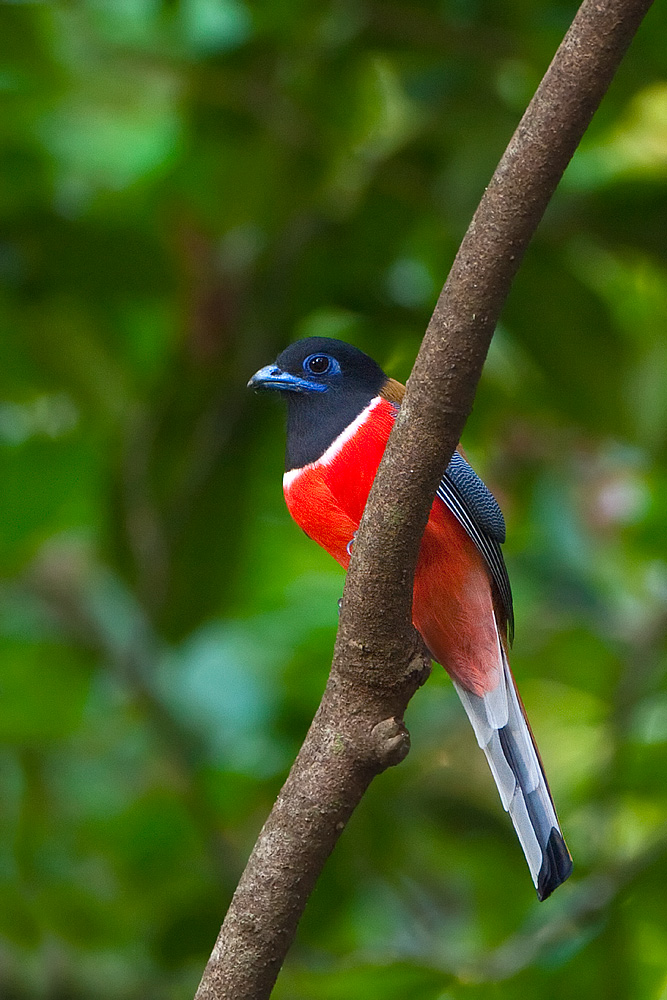In a recent study, scientists have found that the coffee, rubber and areca agroforests in Karnataka support 204 bird species including 13 bird species found exclusively in the Western Ghats, highlighting the supplementary role of agroforests in conserving wildlife.
Highlights:
- One of largest scientific assessments of tropical birds in the world, covering an area of 30,000 sq km in Karnataka
- Coffee, rubber and areca agroforests found to support 204 bird species, including 13 endemic birds of the Western Ghats
- Coffee is richer in birds than areca and rubber, but all three agroforests are important for bird conservation in the Ghats
- Tree cover is an important factor associated with higher bird species richness
Globally, it is recognized that agricultural plantations and agroforests host a diversity of insects, amphibians, reptiles, mammals, birds and bats. In India’s Western Ghats, small and isolated protected areas are embedded in a matrix of multiple land-uses, most of which include agroforests. These agroforests are being increasingly recognized for their supplementary role in conserving wildlife. This study evaluated bird diversity in areca, coffee and rubber agroforests, which are the most widely grown plantation crops in Karnataka’s Western Ghats.
The study, “Producing Diversity: Agroforests Sustain Avian Richness and Abundance in India’s Western Ghats,” appears in the current edition of Frontiers in Ecology and Evolution. Dr. Krithi K. Karanth (Associate Conservation Scientist, WCS-NY), lead author of the paper stated that “this effort involved intensive research in 187 plantations covering an area of 30,000 sq km – taking the team two years to complete. This is one of most comprehensive assessments of tropical bird diversity outside protected areas conducted in the world”.
The study finds that coffee agroforests support higher diversity and abundance of birds when compared to areca and rubber, and found 13 endemic bird species. “Large-bodied frugivores like pigeons and hornbills are found in much higher densities in coffee. These birds play a very important role of seed-dispersal and maintenance of forest trees in the region”, says Shashank Dalvi who is a co-author of the paper and one of the leading ornithologists in the country.
The scientists found a clear positive association of tree density and tree cover in the surrounding areas on bird diversity. Changing agricultural practices that open-up shade tree canopy or switching from coffee and areca to monoculture crops such as rubber can seriously damage the ability of these agroforests to support birds.
Agroforests of the Western Ghats play a critical supplementary role in conserving India’s birds. The authors note that the biodiversity value of agroforests discovered in the study should be incorporated into future planning and policy decisions to facilitate and promote long-term biodiversity conservation. These scientific results should be integrated with policy and markets so that biodiversity rich agroforests can be incentivized to promote sustainable farming practices that enhance birds in coffee, rubber and areca agroforests.
The authors of this study are Dr. Krithi Karanth, Vishnupriya Sankararaman, Shashank Dalvi, Arjun Srivathsa, Dr. Ravishankar Parameshwaran, Sushma Sharma, Dr. Paul Robbins, Dr. Ashwini Chhatre. The study was a collaboration between scientists from Wildlife Conservation Society (WCS), Centre for Wildlife Studies, University of Wisconsin (Madison), University of Illinois (Urbana-Champaign) and Indian School of Business (Hyderabad), and was supported by the National Science Foundation (USA).
The open access paper can be found here.


 CI is a non-profit, non-commercial portal that aims to facilitate wildlife and nature conservation by providing reliable information and the tools needed to campaign effectively.
CI is a non-profit, non-commercial portal that aims to facilitate wildlife and nature conservation by providing reliable information and the tools needed to campaign effectively.